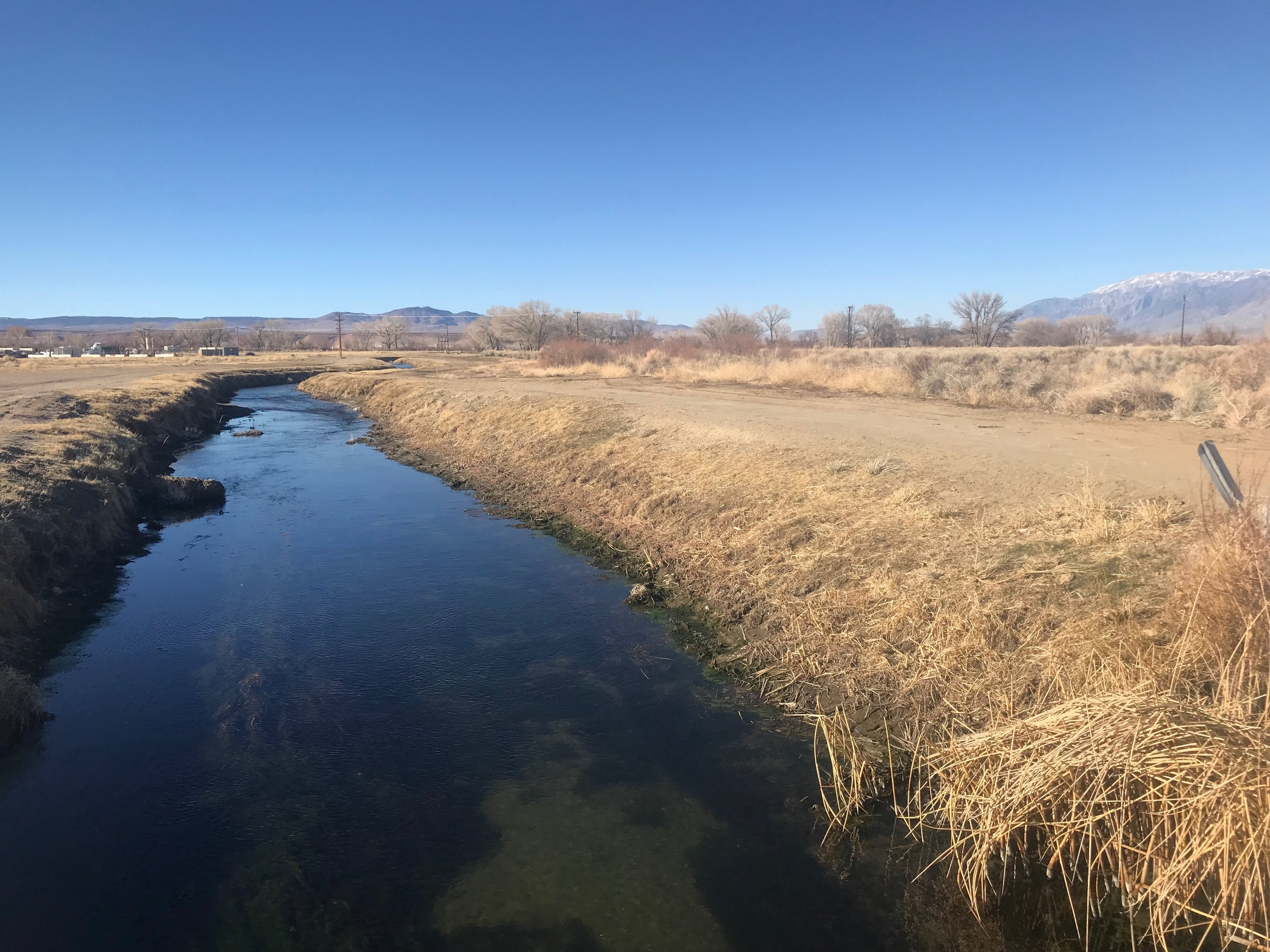We got a little bit of precipitation at the higher elevations. Nowhere near enough to help out the snow pack. Starting to look like year two of a drought. By the weekend we will be back to warm days here in the Owens Valley and nice days at upper elevation waters. Blue wing olive mayflies and midges are providing the food that is making the trout actively feeding. I’ve seen my first adult skwala of the winter season. I find that the nymph produces a lot more takes for me than fishing an adult pattern.
Parachute Adams, blue wing olive parachute, and X-caddis are productive flies throughout the Eastern Sierra in the winter time.
Lower Owens River:
Wild Trout Section:
Fishing pressure from weekend fly fishers and fly club outings has effected fly fishers fishing with nymphs and dries. Nymphing has been the most consistent producer with mayfly nymphs, midge nymphs, and midge pupae. I’ve been using a size 16 olive quilldigon, a size 18 bead head flash back pheasant tail nymph, and size 20 tiger midges or zebra midges. I’ve been experimenting with a few midge pupae patterns with fair results. The trout are starting to come to the surface for the hatching blue wing olive mayflies. Not all spots on the lower Owens River are equal during the hatch. Fly fishers need to move around to find areas with a concentration of rising trout. Even in areas without consistent risers I’ve been fooling trout with an Adams parachutes in sizes 16 and 18 as well as size 18 blue wing olive parachutes. Skwala stoneflies have started to hatch and should be around for a few weeks.
Mark Rafeh of Simi Valley Euro nymphing a late afternoon session on the lower Owens River wild trout section.
Hot Creek:
Interpretive Site:
Access is still over the snow down to the interpretive site from Hot Creek Hatchery Road. Middle of the day has been good with hatching blue wing olive mayflies and midges. Size 20 blue wing olive parachutes and size 20 to 24 biot midge emergers have been fooling the wild trout of Hot Creek. Fly fishers need to watch their approach as these fish are supper spooky. Size 6X tippet, drag free drifts, and accurate casts are required to fool these wary wild trout.
Hot Creek:
Canyon Section:
It is about a mile walk over hard pack snow into the parking lots to access the canyon section of Hot Creek from where the road is no longer plowed. Going in and out of the canyon on the trail can be tricky in spots that have ice on them. Fly fishing pressure is low as few fly fishers are willing to make the effort to hike into the canyon. For fly fishers fishing the canyon nymphing under a dry fly with midge and mayfly nymphs is producing trout. Size 16 olive perdigons, and size 18 bead head flash back pheasant tail nymphs along with size 20 to 24 tiger and zebra midges are good imitations of the mayfly nymphs and midge nymphs. For the dry fly I’m using a size 16 Adams parachute. Carry mayfly parachutes for those days when the trout are actively feeding on the hatching blue wing olive mayflies.
Upper Owens River:
Above Benton Crossing Bridge:
The upper Owens River continues to produce trophy trout up to 24 inches. Access to this area is over the snow with cross country skis, waking, snowshoes, or snowmobiling. The trout have been congregating in the deep holes, runs and under the cutbanks resting and feeding on their migration up river to spawn. I try to avoid fly fishing for actively spawning trout and concentrate my effort on resting and feeding trophy trout. These trophy trout are looking for a mouth full of calories and I’m offering them size 12 stoner nymph, green/gold Prince nymph, and gold ribbed hare’s ear. These flies in jigged versions fished on a Euro rig are my go to big fish producers.
Low clear water in Bishop Creek Canal is making the trout particularly spooky right now.
Bishop Creek Canal:
Behind the Ford Dealer:
The water level in the canal is at its lowest and the water is very clear. This is making the trout extremely spooky. I’m fishing a dry and dropper and casting 30 to 50 feet upstream to keep me far enough away from the trout not to spook them. The blue wing olive hatch has been extremely sporadic and the fish have not started to feed on them with any consistency. I’m doing best with a size 16 Adams parachute and a size 18 bead head flash back pheasant tail nymph three feet under the dry on 5X tippet.



